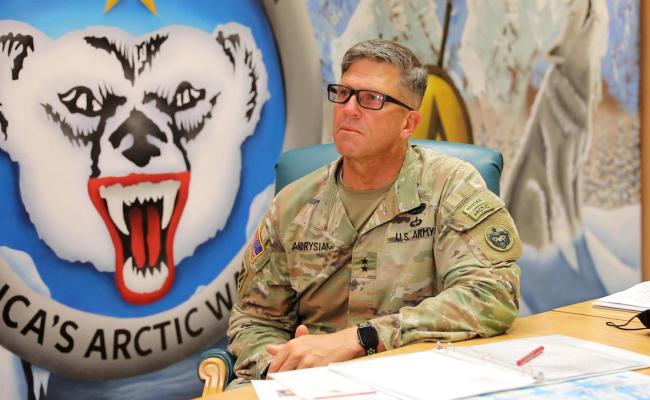The US and Norwegian Armies Plan for More Arctic Training

Deputy Commanding General of US Army Europe and Africa Major General Peter B. Andrysiak (left) and Major General Lars Lervik, Chief of the Norwegian Army (right), expand on the increased interests in Arctic collaboration to High North News. (Photo: U.S. Army / US Army photo by Spc. Christopher Brecht).
In an exclusive interview with High North News in the military hub of Bardufoss, Northern Norway, US Major General Pete Andrysiak talks about the ongoing US interest in collaboration with the Norwegian Army.
“I think it is clear that the Arctic is something that all the US commands are looking at closer. There is this increasing interest of what is going on above the Arctic Circle", Major General Peter B. Andrysiak, Deputy Commanding General of US Army Europe and Africa, tells High North News.
The experienced two-star general officer meets with High North News in Bardufoss, a town in the innermost parts of Northern Norway. It is early morning in the European High North and the sky outside is covered in November blue colors.
Physical and geopolitical changes take place in the Arctic. The world's largest military power, and an Arctic nation itself, has its eyes on the region. There is the question of what the ongoing changes will bring in the future.
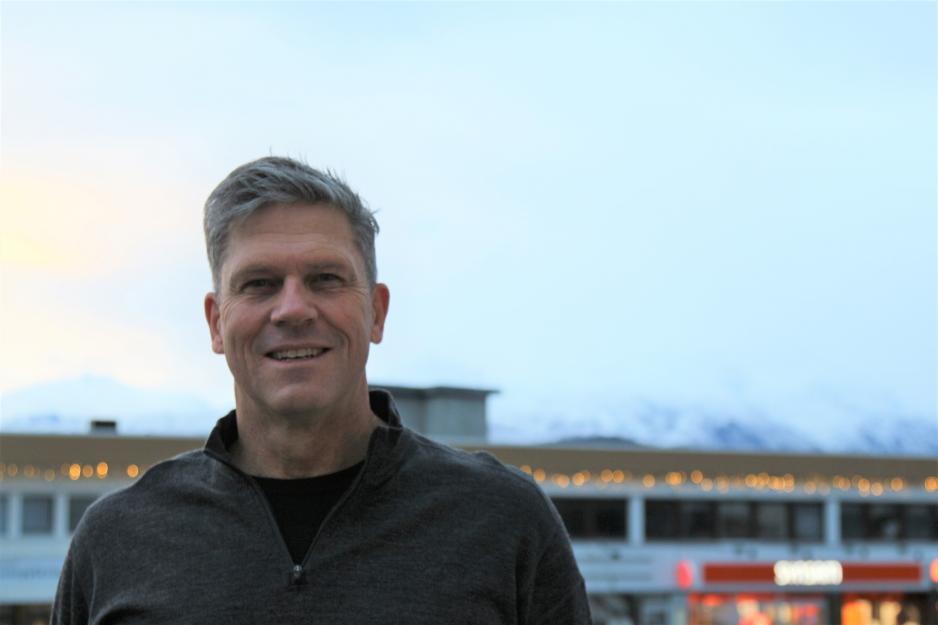
U.S. Army Europe and Africa is responsible for directing US Army operations throughout the U.S. European Command and U.S. Africa Command area of responsibility. As Deputy Commander, Andrysiak's responsibilities expands all the way from the African continent to the High North. (Photo: Hilde-Gunn Bye).
As part of his visit to Norway, Andrysiak is meeting with Norwegian officers in Bardufoss to be oriented about military areas that the Norwegian Armed Force use for training.
Though being a small town of around 2,300 people, the Bardufoss garrison is Northern Norway’s largest and houses the headquarter of Brigade North, Norway’s only brigade and the core of the Norwegian Army.
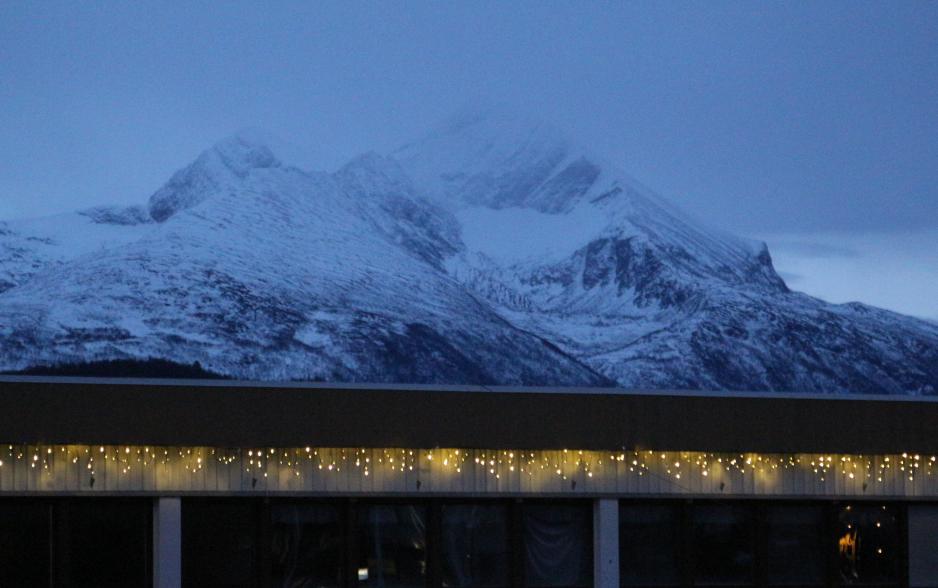
The snow-covered mountains in the area look quite similar to the ones in Anchorage and Alaska where the Major General was previously stationed for the last two years as Commander of US Army Alaska. (Photo: Hilde-Gunn Bye).
Before going north, Andrysiak attended the first-ever Cold Weather Operations Conference at the NATO Centre of Excellence Cold Weather Operations in Elverum. The conference focuses on cold weather education, training, medicine and injuries.
“I’m not surprised, but extremely impressed with how well they are of operating in this environment. There is a lot to learn”, Andrysiak says about the Norwegian Armed Forces.
A shift
As reported by HNN, there has been a shift in the US Army which entails a refocus on operating in the Arctic environment and rebuilding skills lost over the years as units have been deployed to others parts the world, particularly meeting demands in the Middle East and in the global war on terror.
As commander of US Army in Alaska from July 2019 up until the summer of 2021, Andrysiak has watched the shift unfold. Most recently, the US Army completed its new Arctic strategy, which lays out how the Army can better position itself to operate in the region.
"While we do conduct operations in the Arctic there is a lot of work that needs to be done and there is a recognition of that," Andrysiak has previously stated.
Speaking to reporters earlier this year, the Major General explained that the new strategy entails a wholesale change, improving the Army's ability to conduct affective and extended operations in the Arctic.
As focus is geared towards cold weather operations, the US Army is looking to the Norwegian Army, to learn from how they are equipped and trained, Andrysiak explains.

Major General Lars Lervik, was appointed Chief of the Norwegian Army in June 2020. Previously he was the Commander of Norway's Brigade North. (U.S. Army photo by Spc. Christopher Brecht).
Increased cooperation
Chief of the Norwegian Army Major General Lars Sivert Lervik tells High North News there's been significantly more co-training between Norwegian and US forces in Norway over the past four years.
"With regards to the US Army's activities in Norway, that cooperation started a bit later than with the US Marine Corps. But last year and this spring, we have began closer cooperation, and forces from US Army Europe joined us for the first time for a larger exercise this summer. We are now discussing how we should train together in the years to come," Lervik adds.
Lervik and Andrysiak tell High North News there are plans in the making for cooperation between units from US Army Alaska and the Norwegian Army. Subsequently, forces from Alaska will be coming to Norway for their first-ever training in May 2022.

Picture of U.S. Marines and Norwegian Army Soldiers at a training event in Setermoen, Norway. The Norwegian Armed Forces have developed a close relationship with the US Marine Corps who trains regularly in Norway. (U.S. Marine Corps photo by Lance Cpl. Patrick King).
"The cooperation has just begun, but we acknowledge that we have a lot to learn from each other. Both operate in a very special environment. We will have to explore which opportunities there are and dicuss concrete forms of collaboration", Lervik continues.
The Norwegian Army Chief says they have identified a few specific areas that they and the US Army want to cooperate on. Additionally, there's the broader aim of improving abilities to operate under Arctic and Norwegian conditions, which is quite demanding.
It's difficult to buy equipment which removes the challenges you face in this environment.
The Arctic environment
Much of the US Army's interests relates to cold weather operations in Arctic conditions. What do you think they should learn from Norway?
"These operations put high demands to the whole unit as well as the specific soldier. The individual must be able to operate in these conditions. It's brutal. And if you don't know what you're doing you'll either freeze or get severe damages", Lervik says.
Whilst operations may be demanding during winter time in extreme weather conditions, accesibility offroad is often better at this time of the year than during summer. There are also the issues of light during the Arctic summer nights.
"What they do acknowledge is the need to return - to gather the competence", he continues.
"With regards to equipment, much really is about using the equiment and material you already have. Some of it is possible to invest in, but a whole lot is about using what you have in the right way. It's difficult to buy equipment which removes the challenges you face when operating in such an environment", Lervik says.
You clearly notice increased interests from the US forces?
"Yes, without doubt", Lervik says.
The interest is reflected in the visits of both the Commandant of the US Marine Corps and the Chief of Staff of the US Army to Norway this summer.
“Enjoyed meeting with our counterparts from the Norwegian Army recently to discuss allied Arctic strategy. Our countries have new opportunities to reinforce our shared commitment to building Arctic capable forces able to operate in extreme cold weather as well as mountainous and high altitude environments", said Chief of Staff of the Army General James C. McConville, in relation to the trip to Bardufoss, Norway in August.
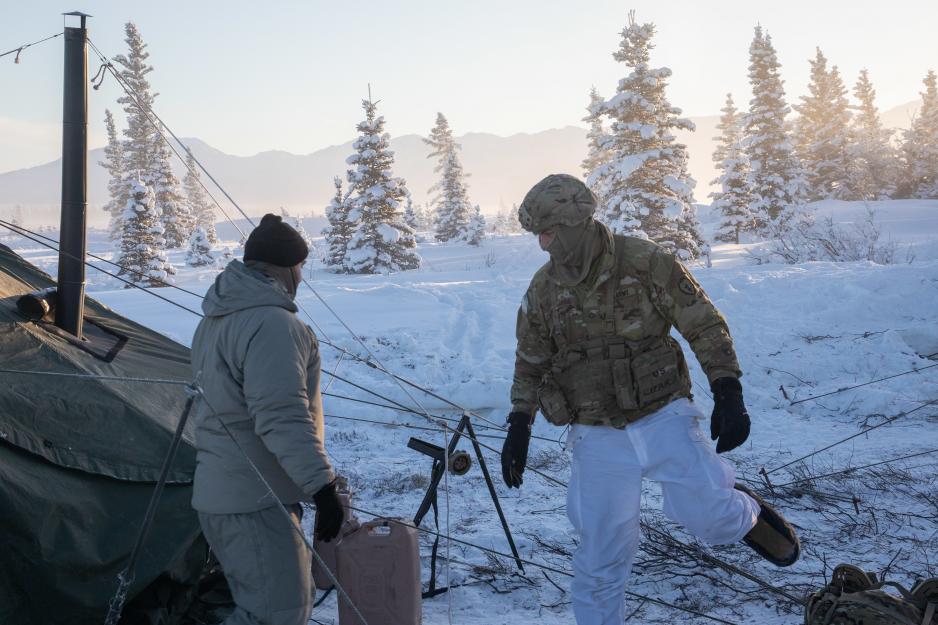
On the ranges of Fort Greely, Alaska: In 2021, US Army Alaska launched the Arctic Warrior exercise, the first-of-its-kind training testing the Army's Arctic readiness. (Photo: Staff Sgt. Alex Skripnichuk, US Army).
Major General Lervik adds that the Arctic strategies published by several US military branches over the past few years signals the American focus on the significance of the Arctic.
"The strategies are somewhat overarching, but they tail out a direction of what they will prioritize. We can contribute on opportunities and limitations, on what is appropriate to do in the Arctic".

When being Commander of the US Army Alaska, Major General Peter Andrysiak, explained that the U.S. Army needs to regain skills in operating in the Arctic environment. US Army Alaska (USARAK) is a unit within the Alaskan Command, US Northern Command. (U.S. Army photo).
Boosting Arctic capabilities
The US Army's Arctic strategy notes that changes in the geopolitical environment and actions of great power competitors, combined with the evolving physical environment, require the Army to refocus and analyze options to rebuild Arctic capabilities.
Andrysiak notes that the strategy is “moving and making progress”.
In Alaska, forces are already starting to analyze breaking points and gaps in equipment used in the extreme conditions to ensure readiness.
As the Army launched its new strategy, the US Army Alaska began a new annual combat exercise called Arctic Warrior, designed to enhance skills to operate in remote and extreme Arctic winter conditions.
“This year, they are building on this and doubling the number of soldiers put into the field", Major General Andrysiak says and adds:
“There are several national training centers in the US where units train to fight against opposing forces. Now we are bringing those capabilities up to Alaska. And this winter, in March, they will run a similar combat training center up in Alaska as they continue to build that cold weather capability.
When you look at it through the Russian lense, they are becoming more exposed.
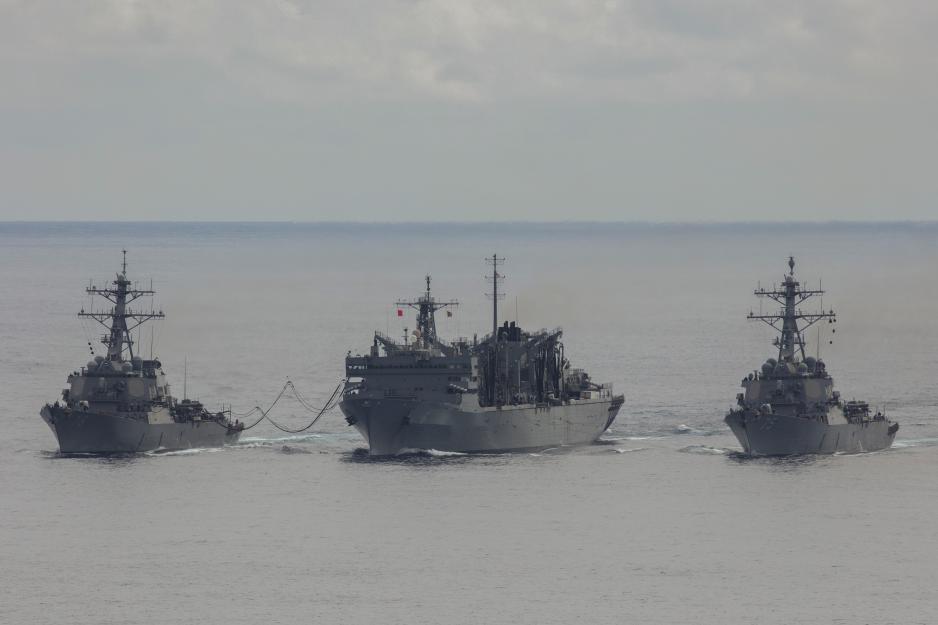
Over the past years, the US military has been actively engaged in the High North and in Norway’s northern neighborhood. American military vessels sail further north in the Barents Sea than they have ever done since the Cold War, and US bombers operate in the Arctic, closer to Russia than in a long time. (Photo: Royal Navy/Dan Rosenbaum).
Arctic security situation
A lot of the US engagement in the High North in recent years is seen through naval and air operations in the region and in Norway's northern neighborhood.
In 2018, the US Navy reactivated its Second Fleet, which has responsibilities in the North Atlantic and the High North. US bombers operate with Norwegian F-35s.
In line with the other US military branches' Arctic strategies, the Army sheds light on Russian activities in the region as well as Chinese interests.
The Arctic is described as a region having the potential to become "a contested space where the United States’ great power rivals, Russia and China, seek to use military and economic power to gain and maintain access to the region at the expense of US interests".
"Regarding the Arctic security situation, our view is not very different from what is commonly understood. There's the concern about the Russian military, building up their bastion defenses. When you look at it through the Russian lense, they are becoming more exposed and realize that commerce is going to come through at some point in time. They are doing their preparations. There is also concern about China's interests", Major General Andrysiak says.
"We see both increased activity and interest in the Arctic. At the Russian side as well. There's no doubt that the situation is more tense than some years back in time. However, it should be noted that it is not a serious security situation at this point. But we notice significantly more activity. The Nowegian Army will increase in the Norwegian North over the next years. That also reflects the security situation," The Chief of the Norwegian Army Lars Lervik concludes.



